Franky Strachan – 30 August, 2013
This open-ended approach makes for an engaging exhibition, visual curiosity carrying the viewer from image to installation, from passage way to gallery, on what ends up feeling like a transcendent journey. Admittedly I initially felt cynical, attracted to the industrial theme but uncertain how it might manifest, anticipating moralistic and pointed political commentaries on global warming and the distancing powers of technology.
Dunedin
Australian and NZ artists
Among the Machines
Curated by Susan Ballard and Aaron Kreisler
6 July - 3 November 2013
This is one of those exhibitions that people will look back on in 100 years time to gauge society’s relationship with technology and the world around it. Among the Machines is definitely of its time and while it demonstrates the ponderings of only thirteen (arguably relatable) artists, it is layered enough to be symbolic of more than just their private musings. Taking inspiration from British author Samuel Butler’s novel Erewhon (1872) - a tale set in Canterbury, New Zealand, in which Darwinian evolution gives way to the machine - it explores contemporary relationships between technology and ecology.
Curated by New Zealand art historian, Dr Susan Ballard (currently based in Australia) and Dunedin Public Art Gallery’s curator Aaron Kreisler, this exhibition is the second in a series of collaborative curatorial projects in which the Gallery visualises new research with visiting scholars. In an interview with Charmian Smith of the Otago Daily Times, Dr Ballard said:
‘The idea is that each artist is represented in some ways by two works, a work we thought fits with what we are thinking at the moment and a work they have thought fits. The idea is that curatorial practice is a dialogue, not only between us as co-curators, but it’s also a dialogue between us and the artists. The next dialogue that happens is with the audience. They come in and start having different kinds of relationships with these objects, these different experiences.’ (1)
This open-ended approach makes for an engaging exhibition, visual curiosity carrying the viewer from image to installation, from passage way to gallery, on what ends up feeling like a transcendent journey. Admittedly I initially felt cynical, attracted to the industrial theme but uncertain how it might manifest, anticipating moralistic and pointed political commentaries on global warming and the distancing powers of technology. And while the exhibits do not necessarily celebrate the wonders of technology - at least not without disquieting undercurrents (as is the case in Bronwyn Holloway-Smith’s Destination Pioneer City (2012): an advertisement for the colonisation of Mars where viewers are offered the chance to live in a new utopia) - the artists stop short of preaching in the name of folk culture. This was a relief.
What I found instead were accomplished works of art that use diverse media to scrutinize connections between time, place and utopian dreams in the hands of an increasingly technological future. This meant a lot of landscape imagery tied to audio and digital effects, coupled with plenty of beanbags and nooks for extended moments of contemplation.
The absolute highlight was Daniel Crooks’ A Garden of Parallel Paths (2012). Using spliced and diced video he has revisited certain urban back alleys - rich in picturesque grit and generic graffiti - in order to create the déjà vu of multiple temporal spaces. The gigantic screen shows up to five scenes at once - each seamlessly blended into its neighbour. The loop also works as a visualization of parallel universes, with disparate events diverging and merging in space without the moment ever passing. Crooks creates uncanny familiarity and echoes of memory in a manner which hypnotises his audience. If I could have sat there until closing time, I would have.
As with all group shows, some works are stronger than others. Hannah and Aaron Beehre’s responsive environment, Toward Mt Terror, is an atmospheric blue-lit space in which noise made by the participant affects the movement of projected white dots dancing across the walls. As a comment on the blur between technology and nature I found the installation oddly ineffective, for it was not initially apparent to visitors that this area was noise activated. Ann Shelton’s Rhodophyta, A view across the Rangitata River Valley to Erewhon Station, from Mesopotamia Station, Te Wai Pounamu, Aotearoa, New Zealand (2013), was also ambiguous where the Erewhon landscape, projected on a large screen, slowly turns red as algae (Rhodophyta) affects the environment. It seemed less poignant than the other works, even though Shelton’s second contribution - a collection of documents pertaining to Samuel Butler’s time in New Zealand - is essential to the exhibition.
Fiona Pardington’s photographic series could constitute a solo exhibition. Despite concrete imagery of the New Zealand landscape (as described above in Rhodophyta (2013)), it is this artist’s input which places the show firmly in New Zealand. Erewhon: Left for Dead in the Field of Dreams (2102) presents seven enormous and dramatic colour portraits of Ngai Tahu women whose individual Moko Kauae together spells ‘erewhon’. Through seaweed symbolic of Tangaroa, God of the Sea, they emerge from a mythological realm somewhere beyond our reach. Their fierce and awakened faces - upside down and closely framed - take on iconic status as their wraithlike presence overwhelms the passersby. This looming and bewitching effect is no coincidence on the part of Pardington or the curators; indeed, the entire exhibition has been put together with great sensitivity towards the viewer’s experience in travelling from one space and one idea to another.
Despite having been created independently, the individual works build upon each other very successfully; one’s fascination gaining with every step as if taken on a significant excursion. I was left with the apocalyptic imagery of Hayden Fowler’s video loop New World Order (2013) in which beautifully coloured birds seem threatened by what looks like a burnt-out and doomed planet. I did not, as I had originally feared, exit the exhibition loathing the world in which we live. Indeed, this sense of uncertainty tied the experience together as a whole, coupling humanity with an alarmingly fragmented future - this quality perhaps ensuring this exhibition is bookmarked in the years to come.
Franky Strachan
(1) Charmian Smith http://www.odt.co.nz/entertainment/arts/263506/its-nature-man-and-machinery, accessed 24 August 2013.
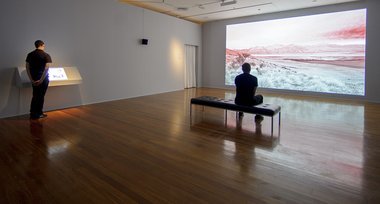
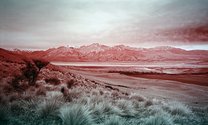
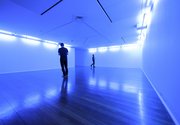
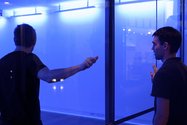
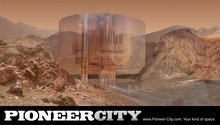
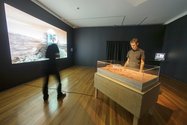
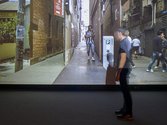
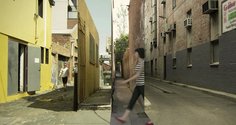

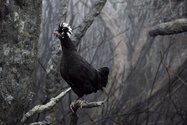

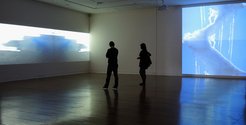
 Two Rooms presents a program of residencies and projects
Two Rooms presents a program of residencies and projects Advertising in this column
Advertising in this column
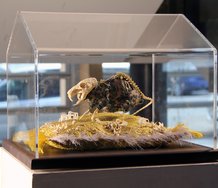
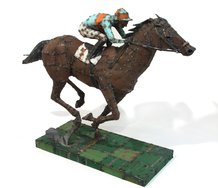
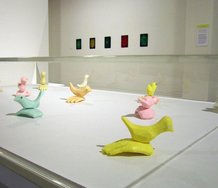
This Discussion has 0 comments.
Comment
Participate
Register to Participate.
Sign in
Sign in to an existing account.